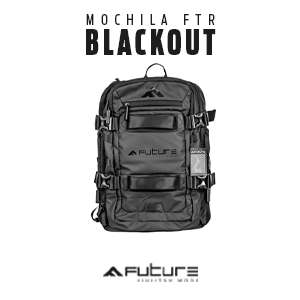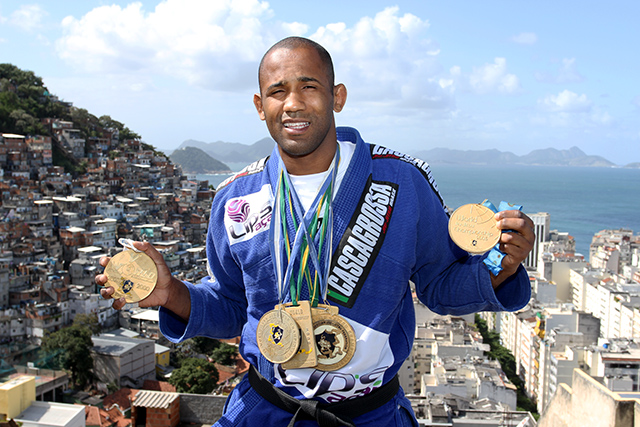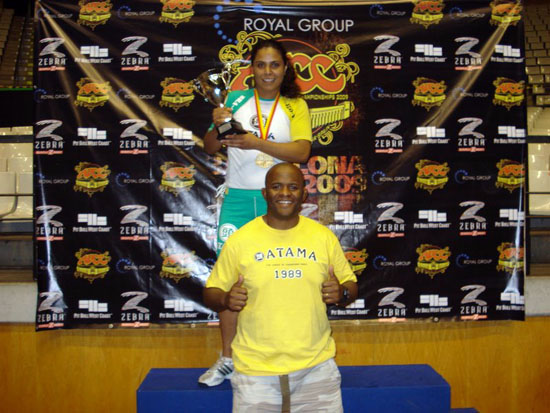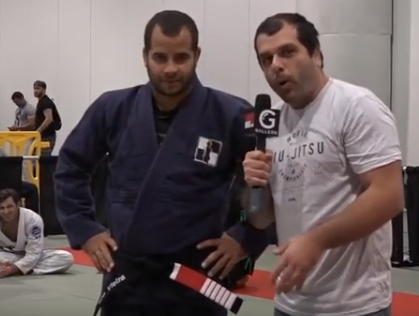[First published in 2009. Scroll all the way down for plain text.]
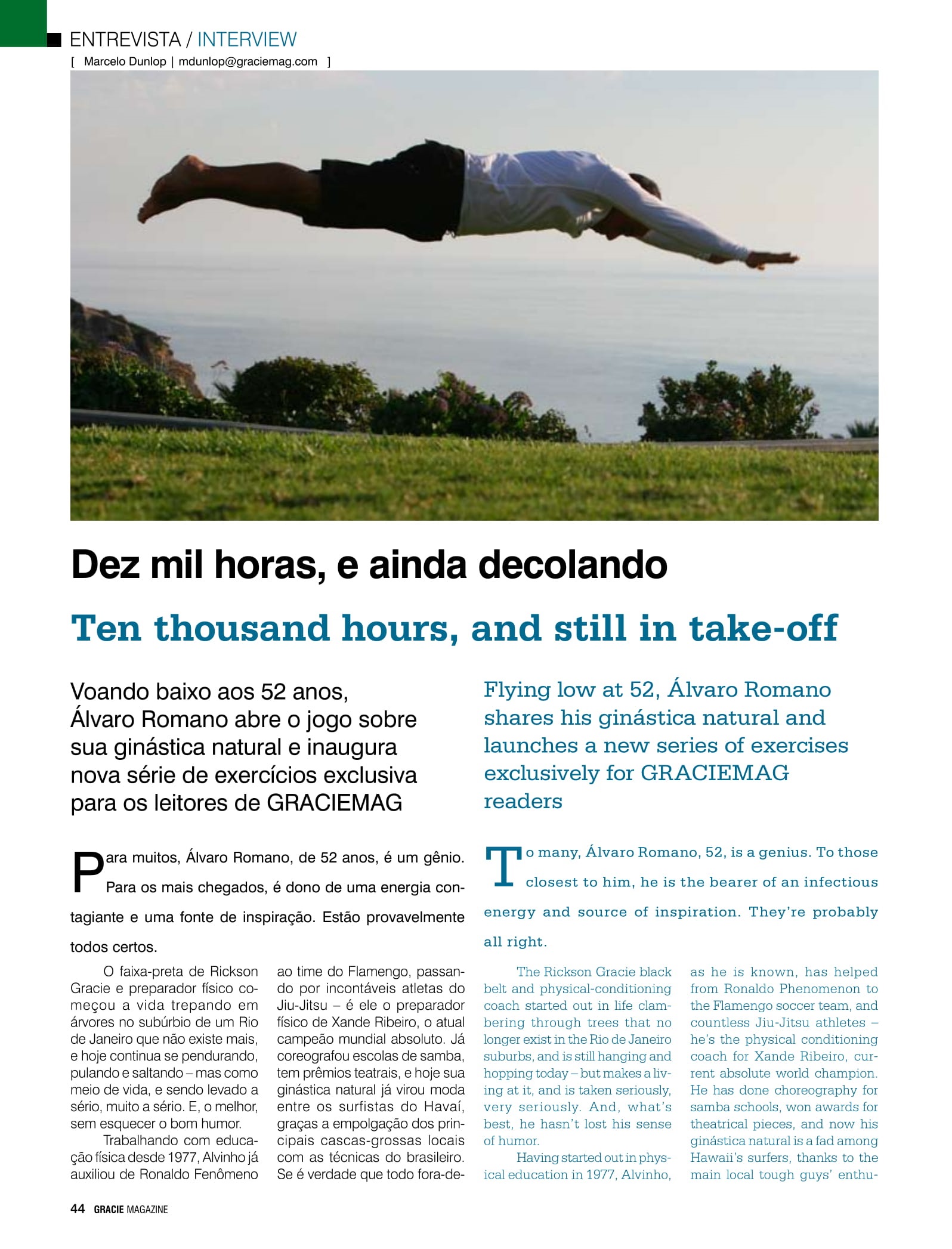
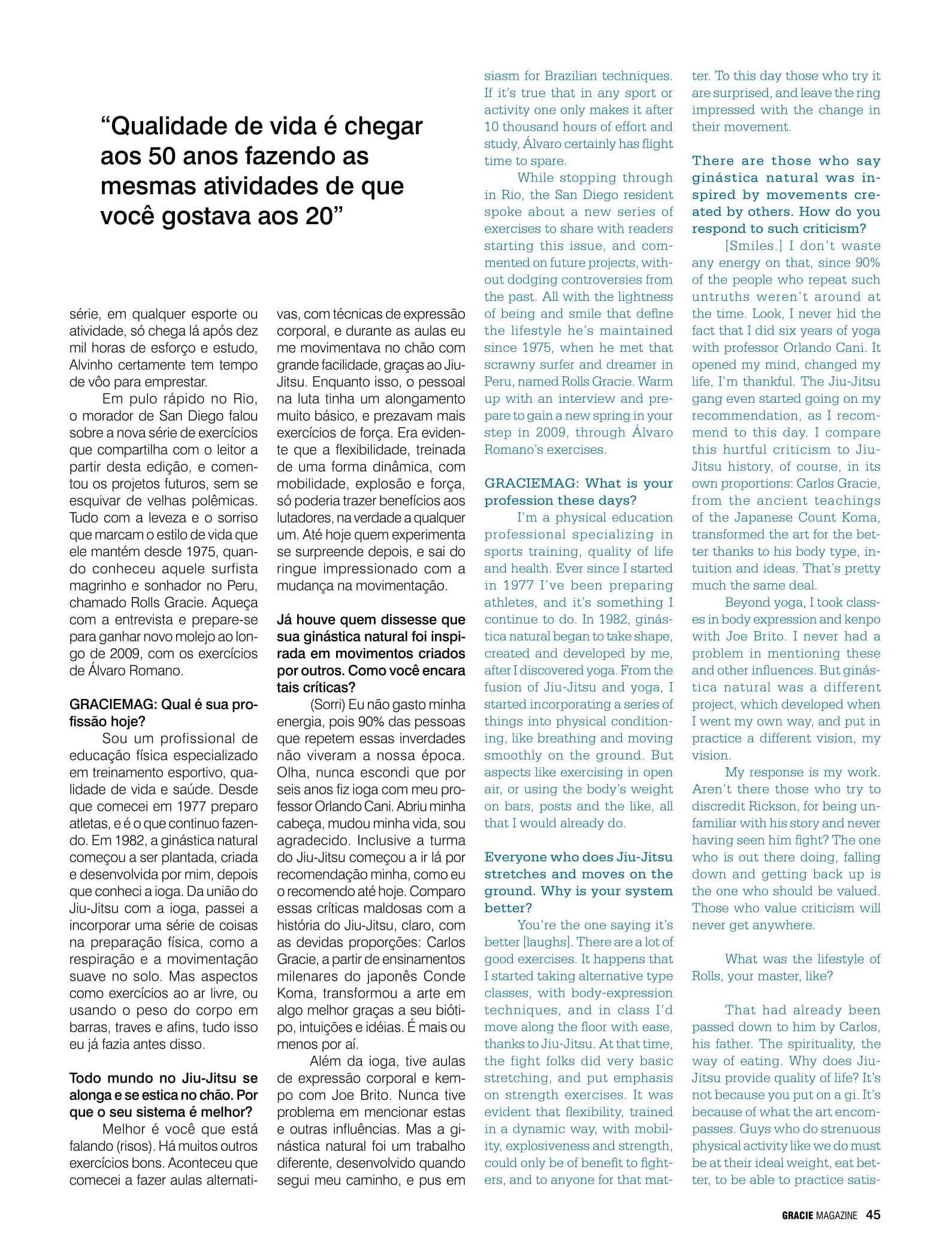
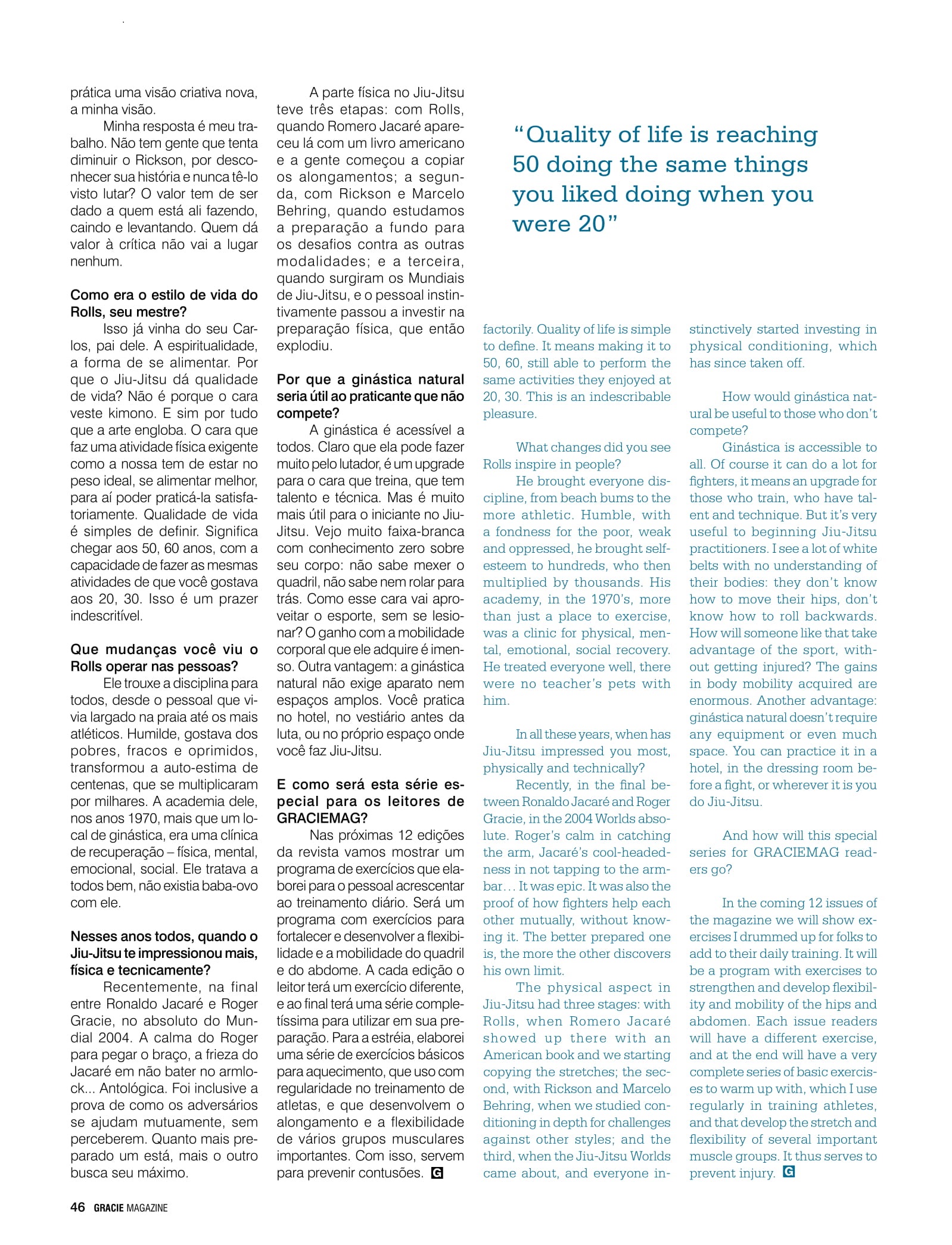
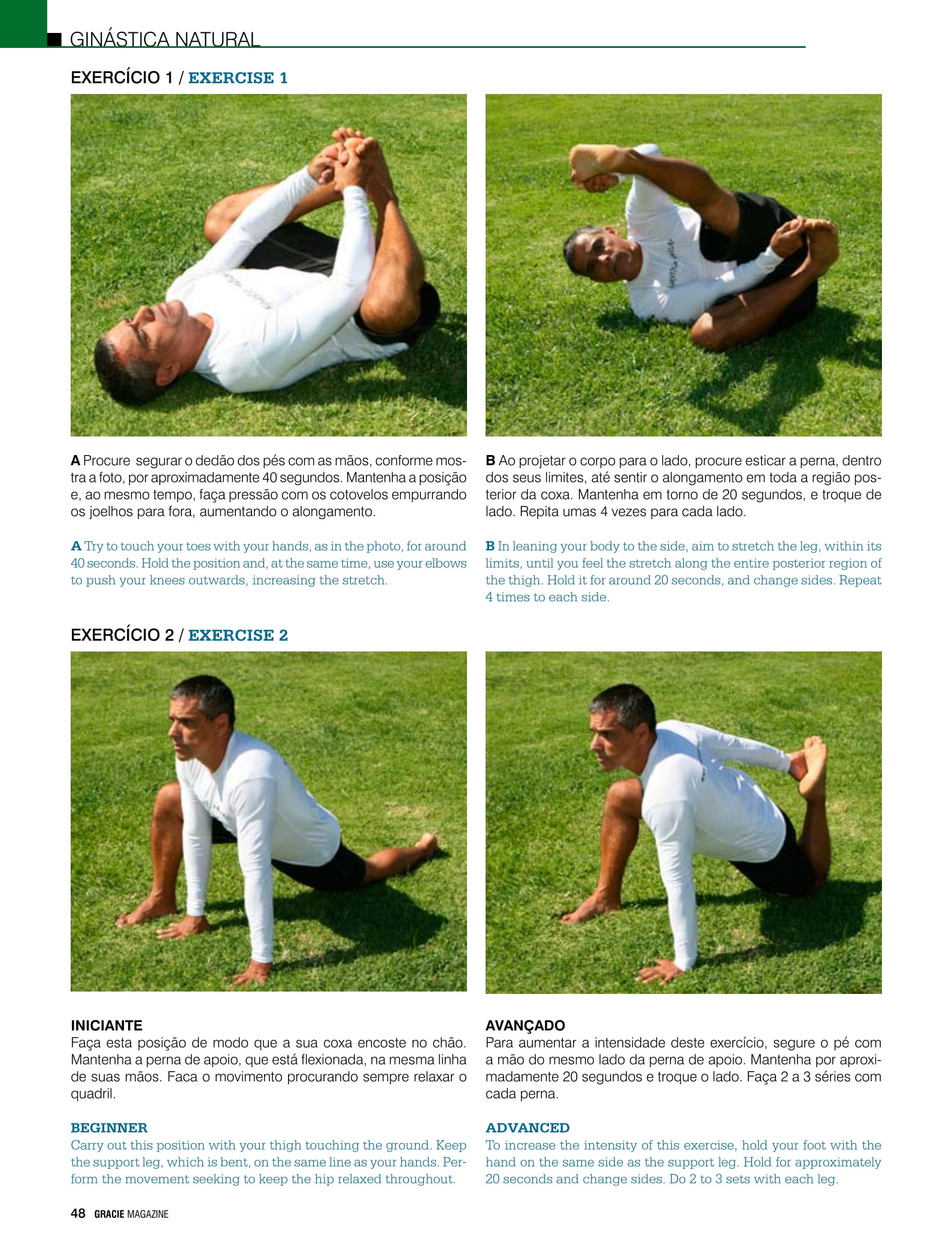
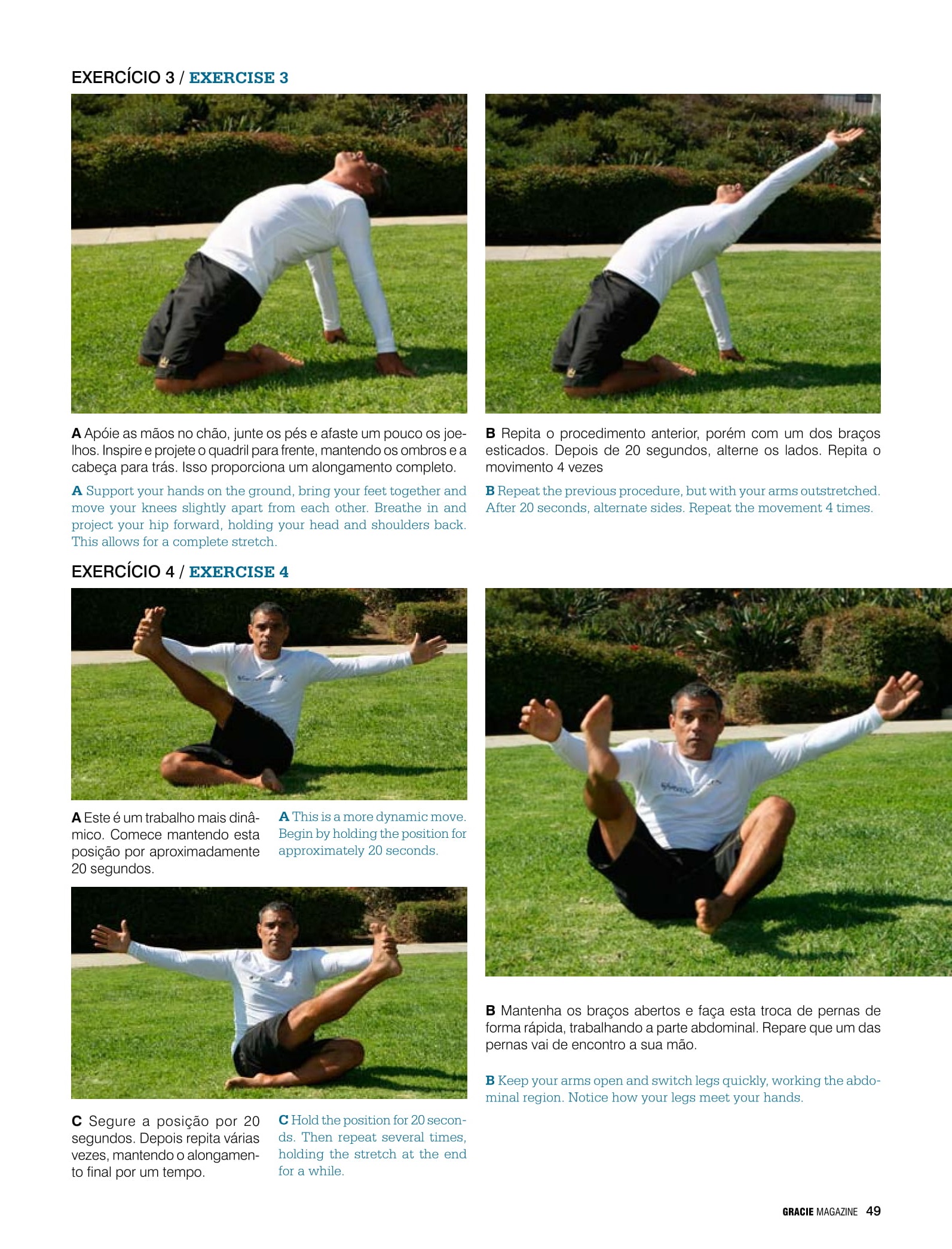
To many, Álvaro Romano, 52, is a genius. To those
closest to him, he is the bearer of an infectious
energy and source of inspiration. They’re probably
all right.
The Rickson Gracie black
belt and physical-conditioning
coach started out in life clambering
through trees that no
longer exist in the Rio de Janeiro
suburbs, and is still hanging and
hopping today – but makes a living
at it, and is taken seriously,
very seriously. And, what’s
best, he hasn’t lost his sense
of humor.
Having started out in physical
education in 1977, Alvinho,
as he is known, has helped
from Ronaldo Phenomenon to
the Flamengo soccer team, and
countless Jiu-Jitsu athletes –
he’s the physical conditioning
coach for Xande Ribeiro, current
absolute world champion.
He has done choreography for
samba schools, won awards for
theatrical pieces, and now his
ginástica natural is a fad among
Hawaii’s surfers, thanks to the
main local tough guys’ enthusiasm
for Brazilian techniques.
If it’s true that in any sport or
activity one only makes it after
10 thousand hours of effort and
study, Álvaro certainly has flight
time to spare.
While stopping through
in Rio, the San Diego resident
spoke about a new series of
exercises to share with readers
starting this issue, and commented
on future projects, without
dodging controversies from
the past. All with the lightness
of being and smile that define
the lifestyle he’s maintained
since 1975, when he met that
scrawny surfer and dreamer in
Peru, named Rolls Gracie. Warm
up with an interview and prepare
to gain a new spring in your
step in 2009, through Álvaro
Romano’s exercises.
GRACIEMAG: What is your
profession these days?
I’m a physical education
professional specializing in
sports training, quality of life
and health. Ever since I started
in 1977 I’ve been preparing
athletes, and it’s something I
continue to do. In 1982, ginástica
natural began to take shape,
created and developed by me,
after I discovered yoga. From the
fusion of Jiu-Jitsu and yoga, I
started incorporating a series of
things into physical conditioning,
like breathing and moving
smoothly on the ground. But
aspects like exercising in open
air, or using the body’s weight
on bars, posts and the like, all
that I would already do.
Everyone who does Jiu-Jitsu
stretches and moves on the
ground. Why is your system
better?
You’re the one saying it’s
better [laughs]. There are a lot of
good exercises. It happens that
I started taking alternative type
classes, with body-expression
techniques, and in class I’d
move along the floor with ease,
thanks to Jiu-Jitsu. At that time,
the fight folks did very basic
stretching, and put emphasis
on strength exercises. It was
evident that flexibility, trained
in a dynamic way, with mobility,
explosiveness and strength,
could only be of benefit to fighters,
and to anyone for that matter.
To this day those who try it
are surprised, and leave the ring
impressed with the change in
their movement.
There are those who say
ginástica natural was inspired
by movements created
by others. How do you
respond to such criticism?
[Smiles.] I don’t waste
any energy on that, since 90%
of the people who repeat such
untruths weren’t around at
the time. Look, I never hid the
fact that I did six years of yoga
with professor Orlando Cani. It
opened my mind, changed my
life, I’m thankful. The Jiu-Jitsu
gang even started going on my
recommendation, as I recommend
to this day. I compare
this hurtful criticism to Jiu-
Jitsu history, of course, in its
own proportions: Carlos Gracie,
from the ancient teachings
of the Japanese Count Koma,
transformed the art for the better
thanks to his body type, intuition
and ideas. That’s pretty
much the same deal.
Beyond yoga, I took classes
in body expression and kenpo
with Joe Brito. I never had a
problem in mentioning these
and other influences. But ginástica
natural was a different
project, which developed when
I went my own way, and put in
practice a different vision, my
vision.
My response is my work.
Aren’t there those who try to
discredit Rickson, for being unfamiliar
with his story and never
having seen him fight? The one
who is out there doing, falling
down and getting back up is
the one who should be valued.
Those who value criticism will
never get anywhere.
What was the lifestyle of
Rolls, your master, like?
That had already been
passed down to him by Carlos,
his father. The spirituality, the
way of eating. Why does Jiu-
Jitsu provide quality of life? It’s
not because you put on a gi. It’s
because of what the art encompasses.
Guys who do strenuous
physical activity like we do must
be at their ideal weight, eat better,
to be able to practice satisfactorily.
Quality of life is simple
to define. It means making it to
50, 60, still able to perform the
same activities they enjoyed at
20, 30. This is an indescribable
pleasure.
What changes did you see
Rolls inspire in people?
He brought everyone discipline,
from beach bums to the
more athletic. Humble, with
a fondness for the poor, weak
and oppressed, he brought selfesteem
to hundreds, who then
multiplied by thousands. His
academy, in the 1970’s, more
than just a place to exercise,
was a clinic for physical, mental,
emotional, social recovery.
He treated everyone well, there
were no teacher’s pets with
him.
In all these years, when has
Jiu-Jitsu impressed you most,
physically and technically?
Recently, in the final between
Ronaldo Jacaré and Roger
Gracie, in the 2004 Worlds absolute.
Roger’s calm in catching
the arm, Jacaré’s cool-headedness
in not tapping to the armbar…
It was epic. It was also the
proof of how fighters help each
other mutually, without knowing
it. The better prepared one
is, the more the other discovers
his own limit.
The physical aspect in
Jiu-Jitsu had three stages: with
Rolls, when Romero Jacaré
showed up there with an
American book and we starting
copying the stretches; the second,
with Rickson and Marcelo
Behring, when we studied conditioning
in depth for challenges
against other styles; and the
third, when the Jiu-Jitsu Worlds
came about, and everyone instinctively
started investing in
physical conditioning, which
has since taken off.
How would ginástica natural
be useful to those who don’t
compete?
Ginástica is accessible to
all. Of course it can do a lot for
fighters, it means an upgrade for
those who train, who have talent
and technique. But it’s very
useful to beginning Jiu-Jitsu
practitioners. I see a lot of white
belts with no understanding of
their bodies: they don’t know
how to move their hips, don’t
know how to roll backwards.
How will someone like that take
advantage of the sport, without
getting injured? The gains
in body mobility acquired are
enormous. Another advantage:
ginástica natural doesn’t require
any equipment or even much
space. You can practice it in a
hotel, in the dressing room before
a fight, or wherever it is you
do Jiu-Jitsu.
And how will this special
series for GRACIEMAG readers
go?
In the coming 12 issues of
the magazine we will show exercises
I drummed up for folks to
add to their daily training. It will
be a program with exercises to
strengthen and develop flexibility
and mobility of the hips and
abdomen. Each issue readers
will have a different exercise,
and at the end will have a very
complete series of basic exercises
to warm up with, which I use
regularly in training athletes,
and that develop the stretch and
flexibility of several important
muscle groups. It thus serves to
prevent injury.
exercise 1
a) Try to touch your toes with your hands, as in the photo, for around
40 seconds. Hold the position and, at the same time, use your elbows
to push your knees outwards, increasing the stretch.
b) In leaning your body to the side, aim to stretch the leg, within its
limits, until you feel the stretch along the entire posterior region of
the thigh. Hold it for around 20 seconds, and change sides. Repeat
4 times to each side.
exercise 2
Beginner
Carry out this position with your thigh touching the ground. Keep
the support leg, which is bent, on the same line as your hands. Perform
the movement seeking to keep the hip relaxed throughout.
Advanced
To increase the intensity of this exercise, hold your foot with the
hand on the same side as the support leg. Hold for approximately
20 seconds and change sides. Do 2 to 3 sets with each leg.
exercise 3
a) Support your hands on the ground, bring your feet together and
move your knees slightly apart from each other. Breathe in and
project your hip forward, holding your head and shoulders back.
This allows for a complete stretch.
b) Repeat the previous procedure, but with your arms outstretched.
After 20 seconds, alternate sides. Repeat the movement 4 times.
exercise 4
a) This is a more dynamic move.
Begin by holding the position for
approximately 20 seconds.
b) Keep your arms open and switch legs quickly, working the abdominal
region. Notice how your legs meet your hands.
c) Hold the position for 20 seconds.
Then repeat several times,
holding the stretch at the end
for a while.


